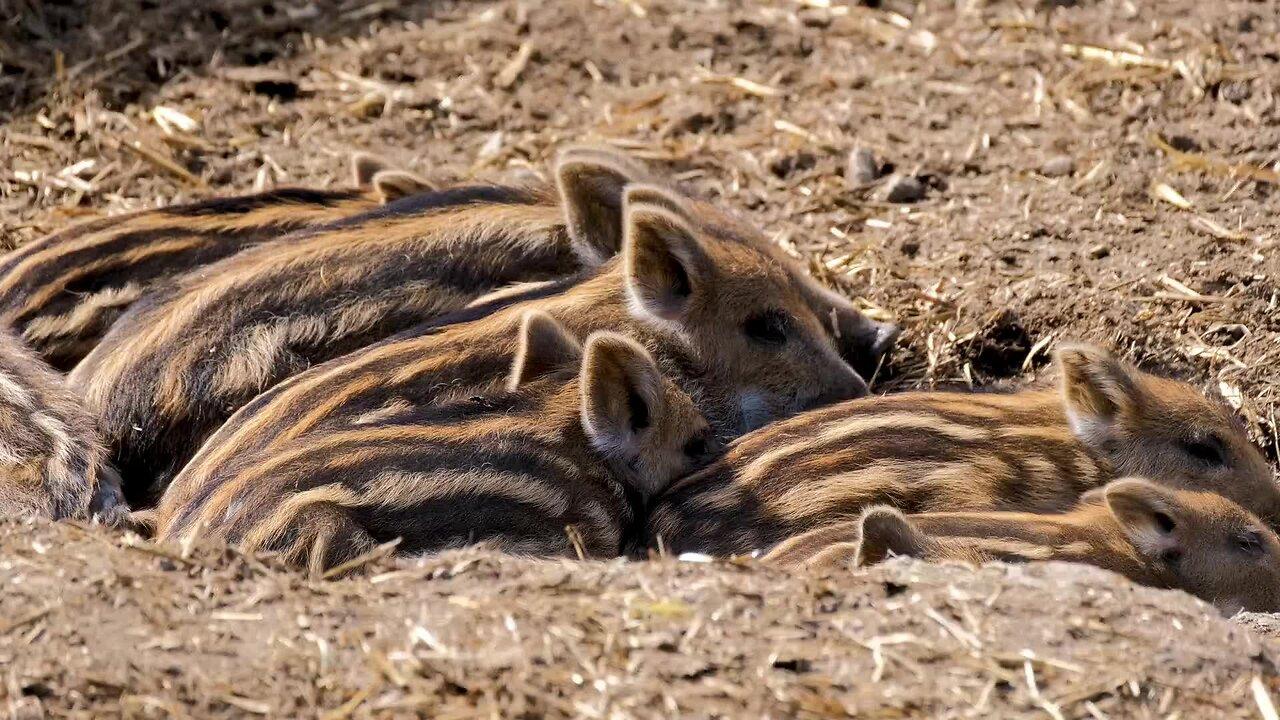"Wild Boars: Nature's Toughest Survivors"

"Wild Boars: Nature's Toughest Survivors"
The wild boar (*Sus scrofa*), also known as the wild swine, is a species of pig native to much of Europe, Asia, and North Africa.
It has also been introduced to the Americas and other parts of the world.
Wild boars are highly adaptable animals, thriving in a variety of habitats, including forests, grasslands, and even near human settlements.
### **Key Characteristics:** - **Size and Appearance:** - **Body:** Wild boars are stocky, muscular animals with a large head and relatively short legs.
They typically have a coarse coat of dark brown to black bristles, though color can vary depending on the region.
- **Tusks:** Both males and females have tusks, but they are more prominent in males.
These tusks are used for digging and as weapons during fights.
- **Weight:** Adult males can weigh between 150 and 300 pounds (70 to 136 kg), while females are generally smaller, weighing between 80 and 200 pounds (36 to 90 kg).
- **Habitat:** - Wild boars are highly adaptable and can be found in a wide range of environments, from dense forests and woodlands to grasslands and agricultural areas.
- They prefer areas with dense vegetation for cover, as well as access to water sources.
- **Diet:** - Wild boars are omnivores, with a diet that includes a wide variety of food items. They consume roots, tubers, fruits, seeds, and nuts, but also feed on insects, small mammals, and carrion.
- They are known for their foraging behavior, using their snouts to dig into the ground for food, which can cause significant damage to crops and natural vegetation.
- **Behavior:** - **Social Structure:** Wild boars are generally social animals, living in groups called sounders.
These groups usually consist of females and their offspring, while adult males tend to be solitary, joining groups only during the breeding season.
- **Breeding:** Breeding can occur throughout the year, with a peak in the spring.
After a gestation period of about 115 days, females give birth to litters of 4 to 6 piglets, though litters can sometimes be larger.
- **Communication:** Wild boars communicate using a range of vocalizations, including grunts, squeals, and growls.
They also use scent markings to communicate and establish territory.
### **Ecological Impact:** - **Role in Ecosystem:** Wild boars play a significant role in their ecosystems as both prey and as seed dispersers due to their foraging habits.
Their digging behavior can also help aerate the soil, though it can also lead to significant habitat disturbance.
- **Human-Wildlife Conflict:** Due to their adaptability and opportunistic feeding habits, wild boars are often considered pests, especially in agricultural areas where they can cause extensive crop damage.
They can also spread diseases such as African swine fever and foot-and-mouth disease, posing risks to livestock.
### **Conservation Status:** - **Population:** Wild boars are not currently considered endangered and are classified as Least Concern by the IUCN.
Their populations are stable or increasing in many parts of the world, partly due to their adaptability and the lack of natural predators in some areas.
- **Management:** In some regions, wild boar populations are managed through controlled hunting to reduce their impact on agriculture and natural habitats.
In places where they have been introduced, they are often considered invasive species, requiring active management to control their numbers.
### **Cultural Significance:** - Wild boars have been featured in mythology, folklore, and heraldry for centuries.
They are often depicted as symbols of strength and ferocity.
In some cultures, wild boars are also hunted for their meat, which is considered a delicacy.
The wild boar's resilience and adaptability make it a successful species in a wide range of environments, but they also pose challenges due to their potential for conflict with human activities.
